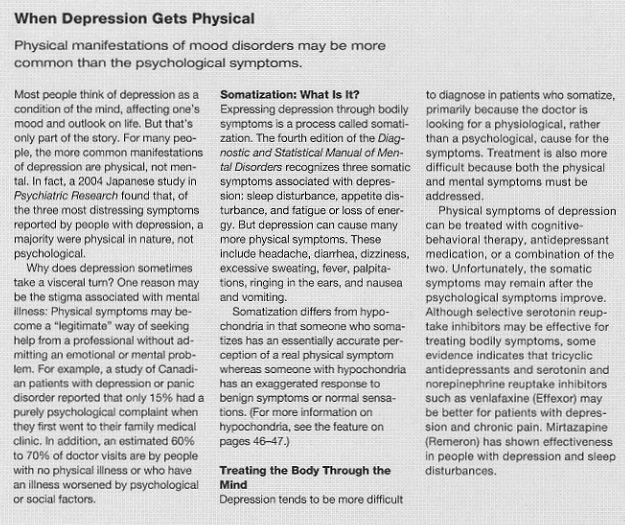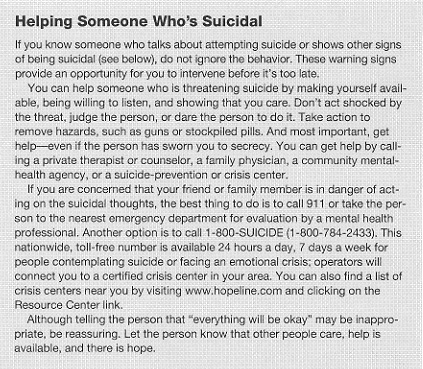| Login | ||

Healthcare Training Institute - Quality Education since 1979
CE for Psychologist, Social Worker, Counselor, & MFT!!

Introduction
Major Depressive Disorder
Symptoms
and Diagnosis of Mood Disorders
Test
| Table of Contents
Although
severe depression and bipolar disorder are readily recognized, it can be difficult
to distinguish the milder (and more common) forms of depression from the emotional
changes that are part of everyday life. Unlike most medical disorders, depression
and bipolar disorder are not associated with any characteristic laboratory changes
or microscopic tissue abnormalities that can be used to confirm a suspected diagnosis.
The
American Psychiatric Association has established diagnostic classification systems
to allow consistent diagnoses of major depression, bipolar disorder, and the various
forms of anxiety. These criteria are contained in the fourth edition of the Diagnostic
and Statistical Manual of Mental Disorders (DSM). Some people who do not meet
the DSM criteria for depression may suffer from a debilitating disorder known
as atypical depression.
Major Depression
According
to the DSM, a person is suffering from a major depressive episode if he or she
exhibits either the first or second of the following nine symptoms, along with
four others, continually for more than two weeks:
o depressed mood with overwhelming
feelings of sadness and grief;
o loss of interest and pleasure in activities
formerly enjoyed;
o insomnia, early-morning waking, or oversleeping nearly
every day;
o decreased energy; fatigue;
o noticeable changes in appetite
and weight (significant loss or gain);
o inability to concentrate or think;
indecisiveness;
o physical symptoms of restlessness or being slowed down;
o
feelings of guilt, worthlessness, and helplessness; and
o recurrent thoughts
of death and suicide; suicide attempts.
The diagnosis is more certain when
these criteria are supplemented by either a family history of the disorder, a
prior episode of depression or bipolar disorder, or the presence of a precipitating
factor such as a recent stroke or the use of medications known to cause mood disorders.
Other
symptoms of depression include disorganized thinking and delusions. In addition
to these disturbances in mood and cognition (thinking), patients with major depression
may experience changes such as constipation or decreased sexual drive.
Episodes
of major depression range from mild to severe. In mild episodes, symptoms barely
meet the requirements for a diagnosis and the associated functional impairment
is minor. Severe episodes are characterized by several debilitating symptoms,
including worsening mood and marked interference with social and job related functions.
Severely afflicted individuals have difficulty with almost every activity-going
to work, socializing, and even getting up in the morning. They may be unable to
feed and dress themselves or to maintain personal hygiene.
Atypical Depression
Patients with major depression are generally
perceived as being sad or having a depressed mood, but sometimes they do not exhibit
either the sadness or some of the other symptoms normally associated with the
disorder. Although such cases are quite common, comprising 29% to 42% of depressed
outpatients, this kind of depression is known as atypical depression. The disorder
is just as debilitating as major depression despite the apparent lack of sadness.
In fact, during a 13-year follow-up of 1,612 participants in one study, patients
over age 50 who had atypical depression were significantly more likely to die
than persons with major depression or no depression.
Older individuals are
less likely than younger individuals to report sadness as a primary symptom of
depression.

Suicide
Suicide-the 11th leading cause of death
in the United States-is a major complication of depression. About 1 in 16 people
diagnosed with depression die by suicide, and two thirds of people who die by
suicide are depressed.
In the United States, the risk of suicide is highest
in older white males and in those who live alone, have made prior suicide attempts,
refuse psychiatric evaluation, or abuse alcohol or other drugs. Although women
attempt suicide three to four times more often than men, men are three to four
times more likely to die by suicide. In addition, a 2002 Swedish study found that
older people with a serious physical illness were six times more likely to die
by suicide than those without a serious illness.
Up to three quarters of people
who die by suicide have visited their medical doctor in the prior month. This
suggests that these people were aware that something was wrong but that neither
they nor their doctor identified depression as the problem. Although it is impossible
to predict accurately who will attempt suicide, there are warning signs that a
severely depressed person may make an attempt. All too often, friends and family
of people who die by suicide are unaware of the seriousness of the signs until
it is too late.
The most important steps to prevent suicide are to recognize
the risk factors and warning signs and to facilitate appropriate treatment of
the underlying psychiatric illness. Typical warning signs are listed below. However,
not all people who die by suicide have these risk factors, and most people who
do have them are not suicidal. Signs include the following:
o social isolation
that may be self-imposed;
o drastic mood swings or overall personality changes;
o
neglecting home, finances, or pets;
o exaggerated complaints of aches or pains;
o
recent psychological trauma, such as a divorce, death of a loved one, or job loss
(which may trigger suicidal thinking in an already depressed person);
o giving
away cherished belongings to loved ones or putting one's affairs in order;
o
sudden calm or cheerfulness after a period of depression;
o frequent use of
alcohol or other drugs;
o buying a gun;
o verbal threats of suicide or statements
that suggest a desire to die; and
o family history of suicide or previous suicide
attempts.

Depression in Older Adults
Although increasing age
alone does not put a person at greater risk for depression, the incidence of depression
is higher in older adults. A survey of Californians age 50 to 95 found that factors
such as chronic illness, physical disabilities, and social isolation-which often
coincide with increasing age-were more predictive of depression than age itself.
As a result, depression in older adults is a serious problem. The National Institute
of Mental Health's Epidemiologic Catchment Area Study estimated that at least
I million of the nation's 31 million people age 65 and older suffer from major
depression, and an additional 5 million have depressive symptoms that are severe
enough to require treatment. Unfortunately, the disease is often misdiagnosed
and left untreated in the elderly.
Many older persons who live alone have inadequate
support mechanisms and are confused by the multitude of systems available to provide
medical care, social services, and financial assistance for their medical needs.
Older adults also tend to be embarrassed and reluctant to seek professional help
for emotional problems, partly because the stigma of psychiatric illness is especially
strong among people in this age group. In addition, friends and family often fail
to perceive signs of distress. Older depressed patients are more likely to tell
their primary care physician about physical complaints than about subjective feelings
of depressed mood. For example, they may report loss of appetite, insomnia, lack
of energy, or loss of interest and enjoyment in daily activities. Unfortunately,
both doctor and patient often consider these symptoms a "normal part of aging"
that accompanies the physical, social, and economic problems faced by many older
adults.
Depression is sometimes left undiagnosed because of life circumstances
that are common in later years. The elderly are typically subjected to numerous
stressful life situations: loss of a spouse, family members, or friends by death
or geographic relocation; retirement, which may be accompanied by a loss of status
and self-identity; diminished financial resources; fears of death or loss of independence
and self-sufficiency; social isolation; and medical problems. Any of these factors
may trigger symptoms of depression that are attributed to life stresses and not
recognized as a true depressive illness.
In addition, the higher prevalence
of concurrent medical conditions and a greater use of medications in older people
further complicate the diagnosis. Although the depression may be a primary disorder,
it may also result from some underlying organic cause such as cancer, stroke,
or a reaction to a prescription drug. The possibility of dementia adds further
difficulties: Symptoms of major depression can mimic symptoms (for example, disorientation,
distractibility, or memory loss) of a dementia-causing disease such as Alzheimer's
disease. Thus, doctors need to perform a careful mental status evaluation as well
as a medical history and physical exam to find the primary cause of the psychological
symptoms.
Natural History And Prognosis Of Mood Disorders
Mood
disorders most often surface between ages 20 and 30, but they can occur at any
age. There is often a delay in accurate diagnosis because symptoms are not recognized
as being related to an illness but, rather, thought to be a reaction to life circumstances.
Depression
The
duration of an untreated episode of major depression is usually eight to nine
months. This period can be shortened considerably with proper diagnosis and treatment.
Most people with depression have their first episode before age 40, and most will
have more than one episode in their lifetime. Relapse rates are lower in people
who continue to take active treatments.
Alcoholism can make recovery from depression
and bipolar disorder more difficult. A recent study compared 176 men and women
who fit the criteria for both alcoholism and major depression with 412 people
who had major depression alone. Subjects who had never been alcoholics or who
no longer drank were two times more likely to recover from an episode of major
depression than the active alcoholics. Unfortunately, many depressed people slow
their recovery by attempting to self-medicate with alcohol.
-"Symptoms
and Diagnosis of Mood Disorders", Depression & Anxiety (Medletter), Jan2005,
p4-12, 9
There
is no question for the Introduction
The next question is found in the next
section,
Section 7
Table
of Contents
Top

